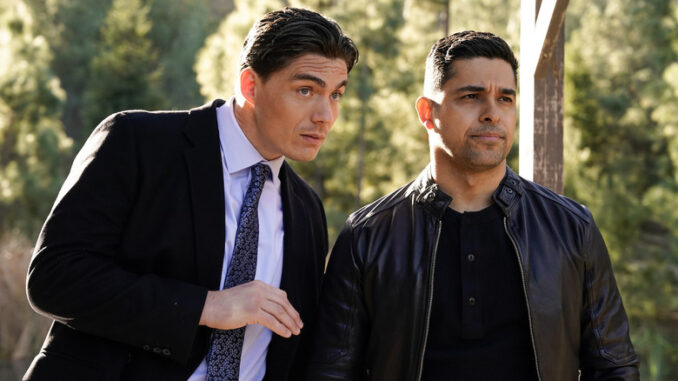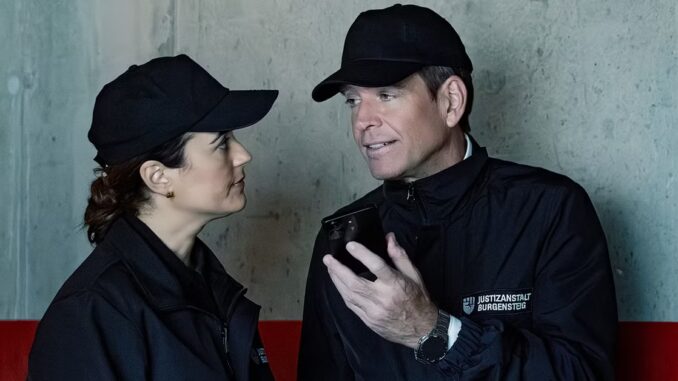
For a show that began in 2003, NCIS should be a relic of network television’s past — a comforting memory of the era before binge drops, algorithms, and content fatigue. And yet, in 2025, the procedural juggernaut isn’t just surviving; it’s thriving. Against every industry prediction, the NCIS franchise remains one of the most-watched entities on television, spanning multiple series, platforms, and continents. What CBS has done quietly — and masterfully — is craft a blueprint for how traditional network television can not only coexist with streaming, but actually leverage it to expand its empire.
The Legacy That Refuses to Fade
For more than two decades, NCIS has done what few franchises ever could — sustain quality, consistency, and connection. Its longevity alone would be impressive, but what’s more extraordinary is how its core fanbase hasn’t fractured amid the rise of streaming. Instead, the NCIS universe has grown. Viewers who fell in love with Gibbs’ old-school leadership style in the early 2000s are now tuning in for Alden Parker’s morally gray investigations in NCIS Season 23, or reuniting with fan favorites in NCIS: Tony & Ziva.
That level of loyalty isn’t built overnight. It’s a testament to how CBS nurtured trust through routine — airing consistently, rarely missing release windows, and giving audiences exactly what they come for: tightly written cases, slow-burn relationships, and just enough serialized mystery to keep them coming back week after week.
But loyalty alone doesn’t explain why NCIS is suddenly dominating the conversation again. For that, we have to look at CBS’s newest gamble — and perhaps its smartest move in years.
“Super Tuesday” and the Reinvention of Appointment TV
While streaming platforms compete for viewers with entire seasons dropped at once, CBS has gone the other direction — making NCIS an event again. Enter “Super Tuesday,” a carefully engineered three-hour block of NCIS programming that premiered October 13.
At 8 p.m., NCIS Season 23 kicks off the night. Then comes NCIS: Origins — the prequel centered on a young Gibbs — at 9 p.m. Finally, the night closes with NCIS: Sydney at 10 p.m., which has been promoted from Fridays to prime midweek real estate.
It’s more than a scheduling stunt — it’s a psychological masterstroke. In an age when most people scroll endlessly trying to find something to watch, CBS delivers a ready-made ritual: a night of familiar faces, interwoven storylines, and crossovers that turn casual viewers into appointment-watchers.
And CBS isn’t stopping there. A massive crossover between NCIS and Origins is already confirmed for November 11, with rumors swirling that Sydney will somehow tie in — making the NCIS universe not just vast, but interconnected.
Streaming Isn’t the Enemy — It’s the Extension
Of course, NCIS’s secret weapon isn’t just its nostalgic nod to old-school TV habits. It’s that it knows how to play both sides.
While three shows air back-to-back on CBS, the fourth — NCIS: Tony & Ziva — streams exclusively on Paramount+. It’s a smart dual-platform strategy that no other legacy network has managed to execute this seamlessly. Instead of dividing audiences, it’s bridging them.
Fans who grew up watching NCIS live now have a reason to explore Paramount+ — not because of a corporate push, but because the story continues there. Tony & Ziva doesn’t just exist in parallel; it connects directly to the flagship series, expanding the emotional core of the universe.
The show’s success speaks volumes: Tony & Ziva has landed in Paramount+’s Top 10 every week, while its Rotten Tomatoes audience score ties for second-highest in the franchise. By allowing characters to evolve on streaming while the main series stays true to broadcast pacing, CBS found the sweet spot between innovation and tradition.
The Franchise That Solved the Streaming Puzzle
The brilliance of NCIS’s strategy lies in its refusal to choose sides. It understands that network TV’s greatest strength — community, routine, anticipation — doesn’t have to be sacrificed at the altar of on-demand convenience.
Instead, NCIS built a bridge: an interconnected world that spans channels and platforms, uniting fans who watch live with those who binge later. It’s the best of both worlds — and a model that could rewrite the rulebook for legacy IPs everywhere.
Other franchises like Law & Order and Chicago Fire have tried similar blocks, but without NCIS’s narrative synergy or cross-platform storytelling. The difference is that NCIS doesn’t just deliver more content — it delivers continuity. Fans aren’t merely tuning in for another case; they’re investing in a universe.

The Future of Television Might Look a Lot Like Its Past
When the finale of NCIS: Tony & Ziva hits Paramount+ on October 23, it will mark the culmination of a bold experiment that began over two decades ago: proving that a procedural can evolve without losing its soul.
While other franchises are still scrambling to adapt to the streaming revolution, NCIS has already done it — quietly, steadily, and with surgical precision. Its hybrid model may very well become the blueprint for the next era of television.
Because in a world where content is everywhere and loyalty is rare, NCIS didn’t just survive the streaming wars — it outsmarted them.
